July 29 marks World Tiger Day, established to raise awareness for the protection of the endangered big cat. Among the many images that have celebrated its symbolic power and beauty over time, Surprise! by Henri Rousseau (Laval, 1844 - Paris, 1910) represents one of the most ambiguous cases in the history of European art at the turn of the 19th and 20th centuries. Shown in 1891 at the Salon des Indépendants in Paris, the work captures a moment in the middle: the tiger that Rousseau depicts in the work moves through tropical vegetation, its back arched and jaws wide open, while lightning rips through the sky in the background. Despite the apparent immediacy of the scenethe work is elusive. Is the animal caught in an act of aggression or is it fleeing from the lightning?
According to contemporary reviews and his own later statements, Rousseau may have initially included prey that was later deleted. Above the tall grasses on the right are dark areas that suggest the original presence of a second subject. Later, the artist referred to the painting as A Tiger Chasing Explorers, and the final title, Surprise!, may be a pun on the French expression grève surprise, meaning sudden surprise but also lightning in a clear sky, supporting a double meaning: the irruption of the animal and the outbreak of the storm.
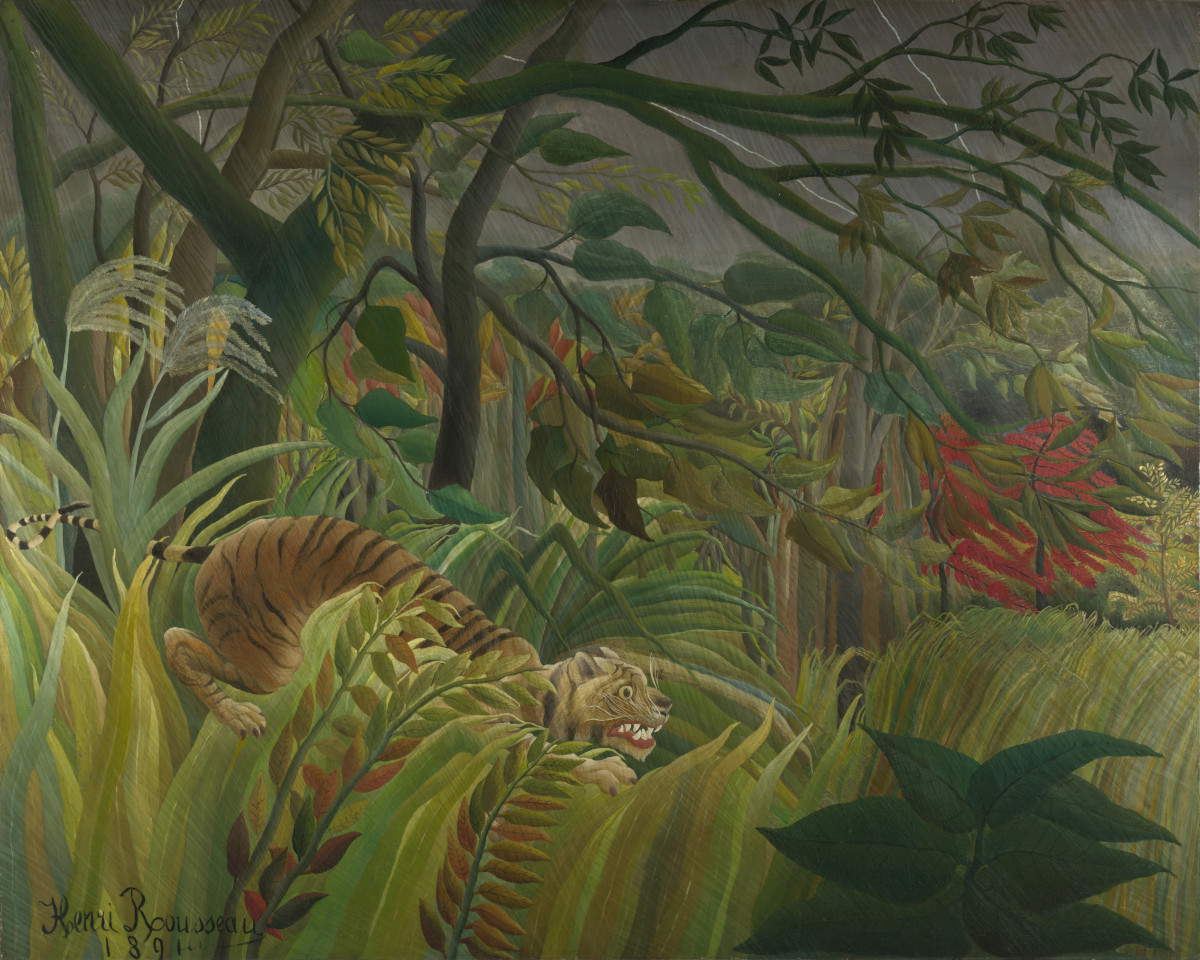
Surprise! is the first work of the twenty or so jungles that Rousseau would paint over the course of his career. Scenes that would help build the painter’s exotic reputation, though based entirely on imagination. Why? Rousseau never left France and never traveled to tropical territories. His alleged participation in a military expedition to Mexico, which he himself mentioned, has no historical confirmation. In fact, his plant and animal world is the result of careful observations made at the Jardin des Plantes in Paris, home of the botanical garden and zoo, as well as the Zoology Galleries built for theUniversal Exhibition of 1889. In the spaces, accessible free of charge, Rousseau observed exotic plants, live animals, and a large collection of stuffed specimens displayed in naturalistic poses.
The jungle that takes shape in Surprise! is thus the result of a complex compositional process. The plants, rendered with almost botanical precision, combine tropical varieties seen in exhibition gardens and indoor species. The pictorial surface is distinguished by its decorative density: leaves and foliage are bound together in an elaborate pattern composed of intense greens, browns, reds, and ochres. It is also possible to say that the individual portions of the painting are worked meticulously and according to a sequential technique. In fact, Rousseau used a pantograph, a mechanical tool that enabled him to enlarge and bring back to the canvas the desired shapes. The procedure may explain why the tiger appears suspended in space, rather than anchored to the ground.
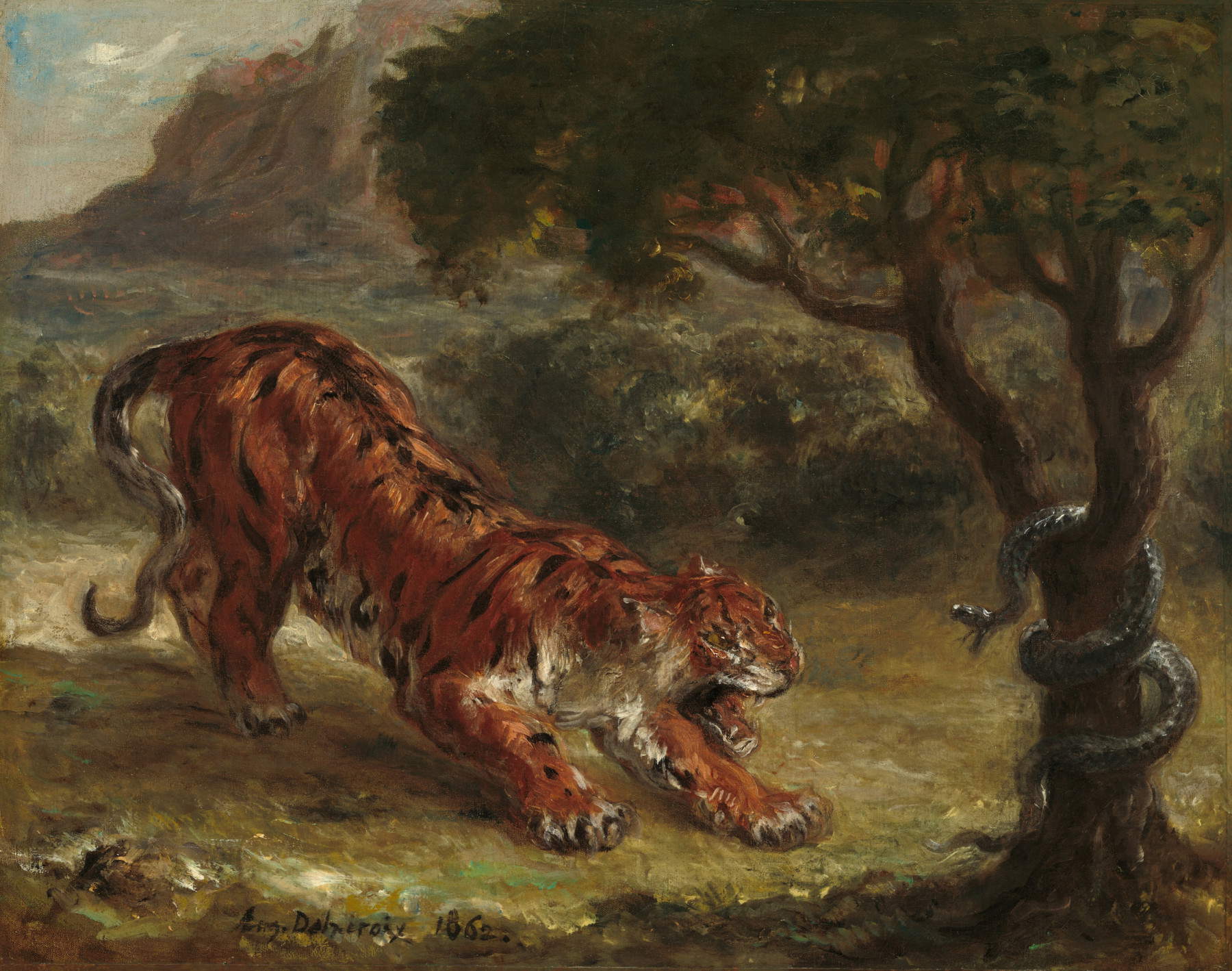
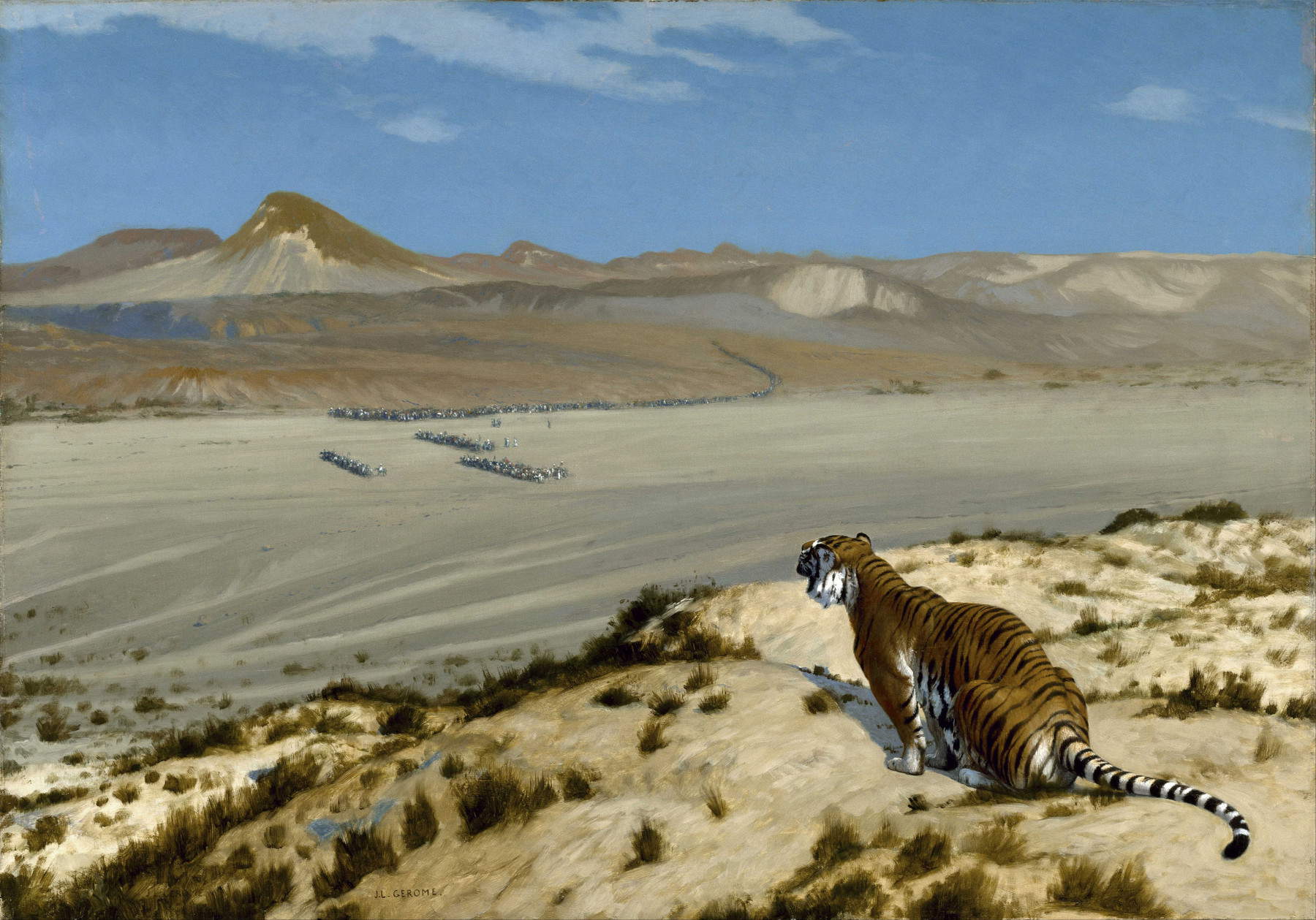
In addition to this, the scene is crisscrossed by a grid of silver, semi-transparent lines indicating rain-a graphic solution that recalls, in structure and pattern, the animal’s striped fur and the sharp silhouettes of leaves. The treatment of rain bears obvious similarities to Japanese ukiyo-e prints, particularly Utagawa Hiroshige’s Sudden Downpour on the Shin-Ōhashi Bridge and Atake, published in 1857. In this case, Rousseau, like many French artists of the time, may have known the images through prints that circulated widely in Europe. The tiger itself arises from a collage of sources: stuffed animals seen at the zoo, scientific images, magazine illustrations, and even the observed behavior of domestic cats. We also do not rule out the influence of artists such as Eugène Delacroix, who in 1830 painted Young Tiger Playing with His Mother and then continued in 1862 with Tiger and Snake, or even Jean-Léon Gérôme , who in about 1888 painted Tiger on Guard.
We also know that Henri Rousseau was self-taught, a Parisian customs clerk who began painting as a hobby. Despite his nickname Douanier or Customs Officer, he never reached the rank of inspector. In any case, without any academic training, he built a personal language based on simplification, perspective flattening and a decorative rendering of the surface. Characteristics that earned him, at first, the scorn of part of the critics and the public, but which eventually attracted the interest of the avant-garde. Indeed, Rousseau called himself a student of nature, and saw in his naiveté a form of expressive truth. Today he is considered a precursor ofnaïveart , a definition attributed to those artists without formal training, often identifiable by their spontaneity of stroke and simplified view of the world.
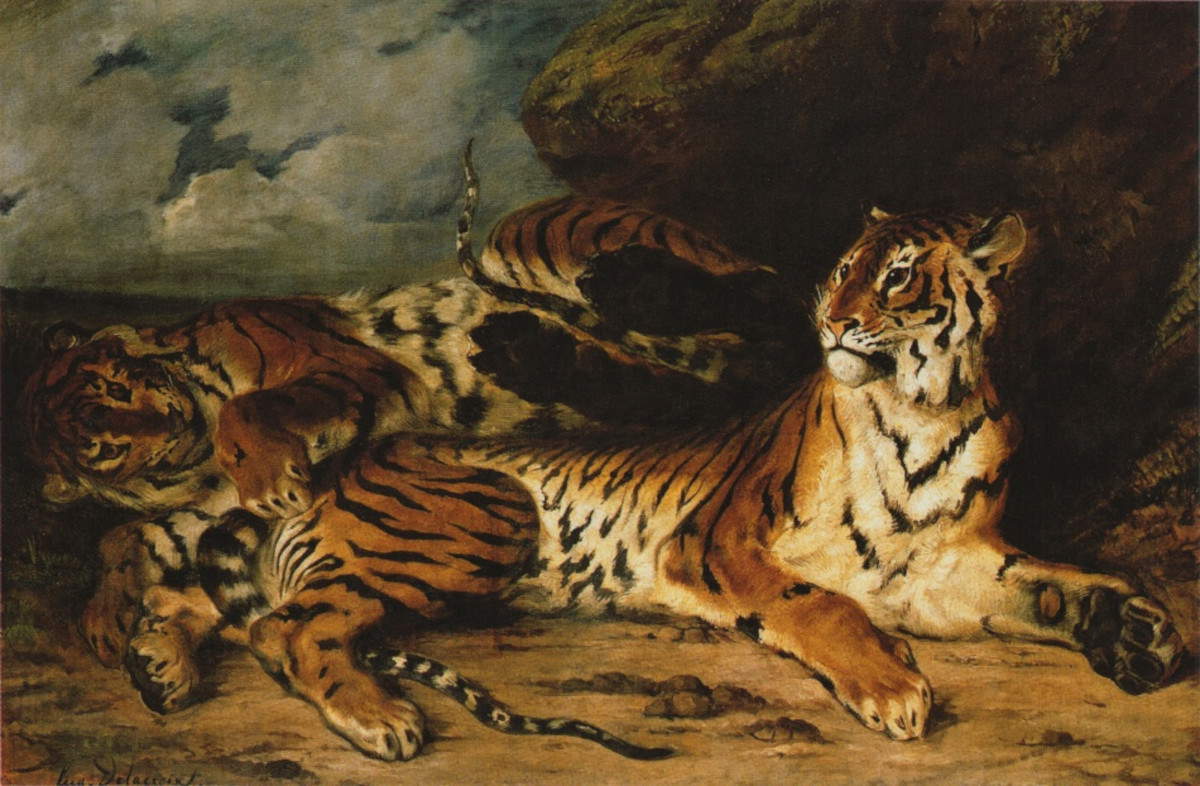
Surprise! thus appears as a turning point in Rousseau’s career. The work was presented at the Salon des Indépendants, founded in 1884 to provide an exhibition space free of juries and prizes, in opposition to the rigid system of the official Salon. The founders included Odilon Redon, Georges Seurat, and Paul Signac, but Rousseau’s debut in that context did not go unnoticed. One of the first serious reviews came from Félix Vallotton, a young artist and writer, who wrote in The Swiss Journal, “His tiger should not be ignored: it is the alpha and omega of painting. [...] There is always something beautiful in seeing a faith, whatever it may be, expressed without compromise. I have sincere esteem for these efforts.”
Among the first to recognize its value was also Pablo Picasso, who purchased one of Rousseau’s works and organized a celebratory banquet in 1908, attended by many prominent figures in the Paris cultural scene. On that occasion, Rousseau addressed Picasso, stating, “You and I are the two greatest artists of the age: you in the Egyptian style, me in the modern style.” Today, on the occasion of the day dedicated to the tiger, Surprise! reaffirms its centrality in the history of modern art: a work poised between technical naiveté and refinement, able to evoke a nature never seen but deeply felt.
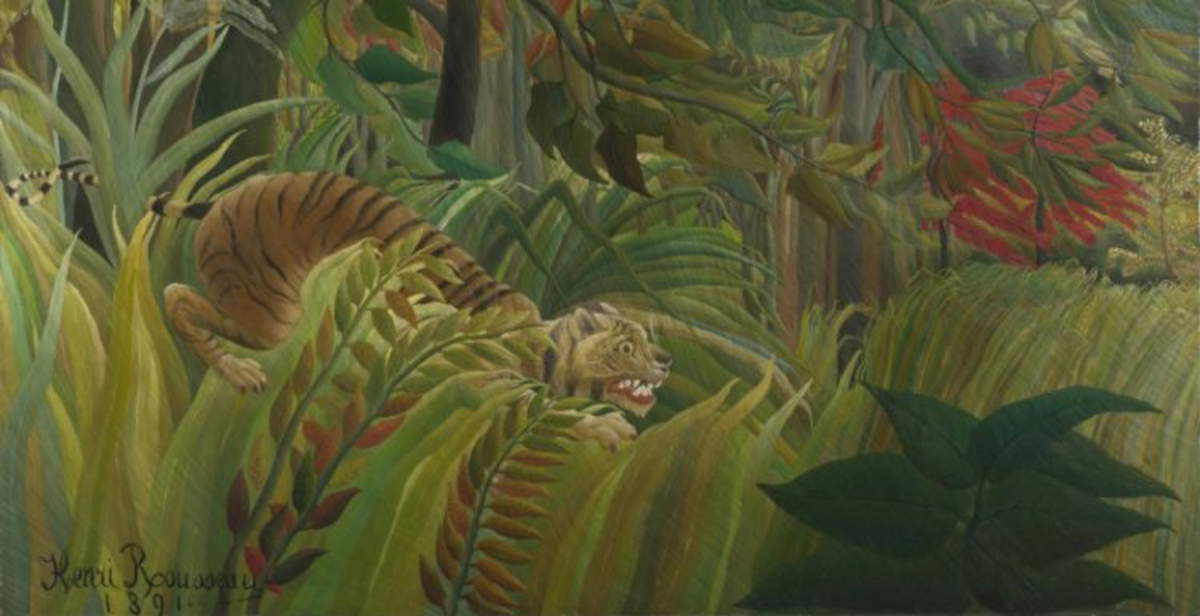 |
| Henri Rousseau's enigma of the tiger in the 1891 painting Surprise! |
Warning: the translation into English of the original Italian article was created using automatic tools. We undertake to review all articles, but we do not guarantee the total absence of inaccuracies in the translation due to the program. You can find the original by clicking on the ITA button. If you find any mistake,please contact us.